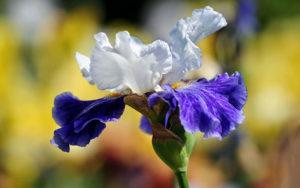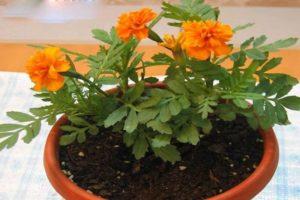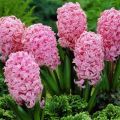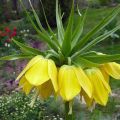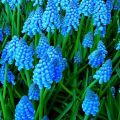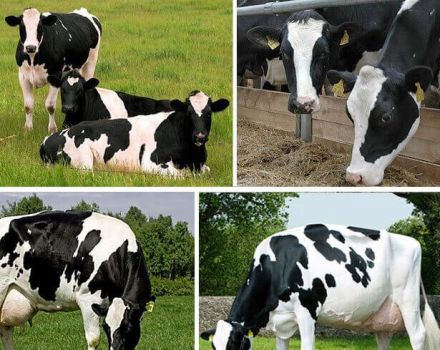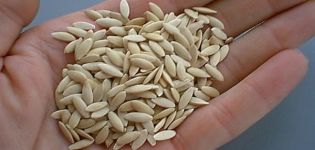Planting and caring for a poultry farm in the open field, description of species
The poultry garden, also known as ornithogalum, blooms after primroses and is a spectacular decoration of the flower garden. It is a member of the Asparagus family and the Hyacinth plant subfamily. Having familiarized themselves with the rules of planting and caring for a poultry farm in the open field, every gardener can easily grow this attractive flower in his own area.
Botanical description of the poultry farm
Ornithogalum, or poultry plant, is a perennial bulbous plant. In the wild, it is found in the Mediterranean, South Africa and Western Asia, where the subtropical and temperate climate prevails.
Dark green, elongated, belt-shaped leaves appear earlier than peduncles. In the upper part of the peduncles, racemose or corymbose inflorescences of various densities flaunt. Flowers with six petals are white or light yellow in color. A distinctive feature of the plant is a green stripe running along the outer surface of the perianth leaves. The fruit of the poultry farm is in the shape of a box, inside of which there are black, flat, round seeds.
The poultry bush is small in height - as a rule, from 30 to 85 centimeters. Rounded, oblong or ovoid plant bulbs in diameter reach from 2 to 5 centimeters. Their surface is densely covered with scales.
Varieties and varieties
More than ten varieties are cultivated. In some varieties, bulbs and shoots are edible. Poisonous varieties with alkaloids are also known. What types of poultry houses are most popular.
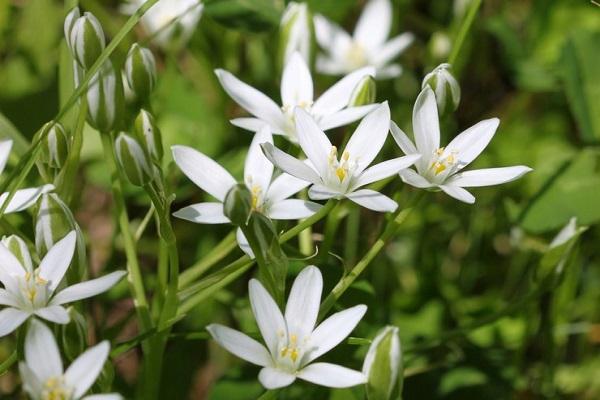
Caudate
The tailed poultry plant has medicinal properties, although it belongs to the number of poisonous plants. It has a large root part and a rounded bulb shape. Basal leaves of linear shape have a whitish vein in the middle. The average width of the leaves is 4 cm, and the length reaches a meter. The largest ones can bend slightly in the central part. On long peduncles, racemose inflorescences with miniature white flowers are located. In one inflorescence up to hundreds of flowers. South Africa is considered to be the homeland of this plant species.
Arabic, or Hawk Milk
The Arabian poultry farm known as Hawk Milk is native to the Mediterranean.The variety has become widespread in Israel. The peduncle reaches 85 centimeters in height. In the root rosette, linear leaf plates of a light green hue are collected. It has a loose inflorescence of white flowers with rounded petals. Attention to this variety is attracted by unusual green ovaries, which darken over time and become almost black.
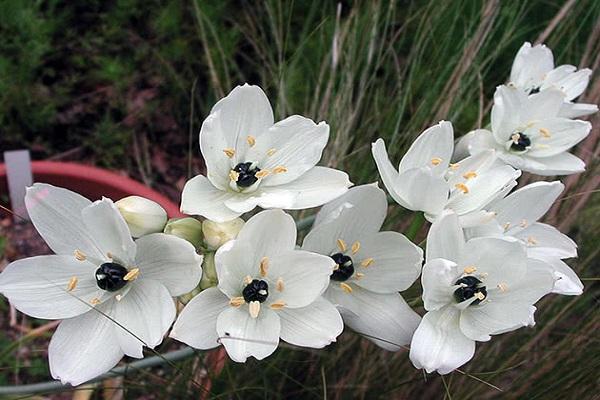
Arcuate
This type of poultry farm mainly grows in mountain forests, steppe slopes and forest edges. Occurs in the territory of the Ciscaucasia, the northern part of Western Transcaucasia and the eastern part of Crimea. Plant with a high peduncle, ovoid bulb and light green foliage. On the perianth there are white leaves with a weakly expressed green stripe on the outside - sometimes it may be completely absent. After ripening, the stalks of the plants become arcuately lagging.
Large
The plant reaches a height of 40 to 150 centimeters. The large poultry farm is characterized by long pedicels and loose, sparse brushes. Thin green stripes are present on the outside of the white perianth leaves. Distributed in the Ciscaucasia and Transcaucasia. Prefers shady wooded area.
Husson
Representatives of this type of poultry farm are notable for their small size and height up to 15 centimeters. In the corymbose inflorescences of the plant, up to five flowers of a classic white color are collected. Under natural conditions, it grows in the Crimea and the Caucasus.
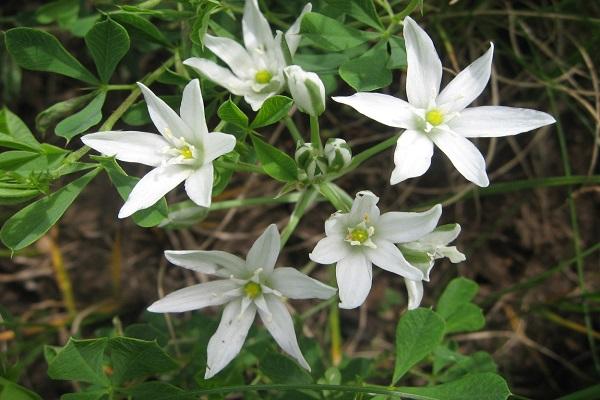
Growing conditions
To successfully grow a poultry farm on your site, you need to determine what conditions are most favorable for it:
- During the period of vegetative growth, the plant needs organic feeding.
- During flowering, more moisture is required; during the period of seed formation, the amount of watering should be reduced.
- A plant culture should be transplanted every 4-6 years.
- In winter, with abundant snow cover, the poultry farm does not need additional shelter. But if there is little or no snow, it becomes necessary to mulch the soil and cover it with spruce branches.
Outdoor planting
Before planting a poultry farm in open ground, it is necessary to correctly determine the place and timing, as well as saturate the soil with nutrients.
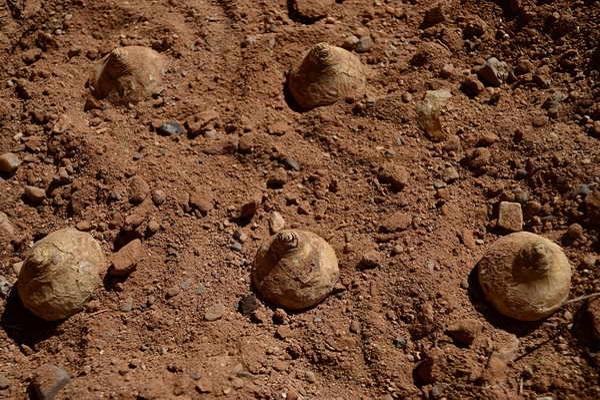
A place
The most favorable for the poultry farm will be a sunny or semi-shady area near garden trees or shrubs. It is necessary to avoid places with stagnant water, which provokes decay of the plant rhizome.
Site preparation and soil fertilization
A prerequisite for the soil is good water resistance and waterlogging prevention. Therefore, it is best to choose areas with sandy soil. Heavy soils with a high clay content are not suitable for growing ornithogalum.
For enrichment with nutrients, it is preliminarily recommended to add some organic fertilizers to the soil - for example, peat or deciduous humus. To improve the outflow of moisture, drainage should be performed at the bottom of the planting holes - for this, crushed brick, small pebbles or crushed stone are suitable.
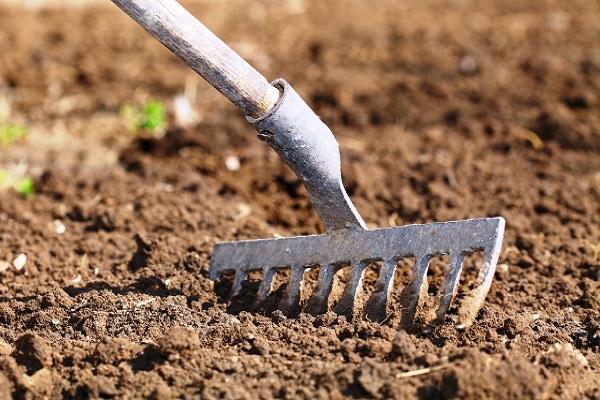
Terms and technology of planting a flower
The optimal period for planting poultry bulbs in open ground is August or September.
The landing technology is simple:
- In the garden area, several planting holes are dug with a depth of 6 to 10 centimeters - depending on the size of the bulbs used. The distance between the pits is up to 20 centimeters for the plants to develop freely.
- Place one onion in each hole.
- Sprinkle with light, loose soil and water.
How to care for a plant
Agronomical techniques are standard: irrigation, fertilizing, pruning, pest and disease control.
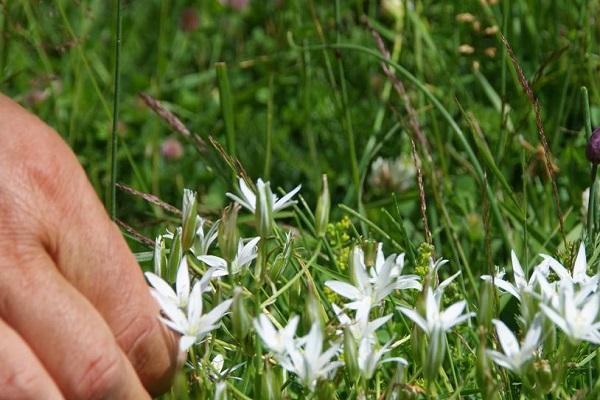
Regularity of watering
Watering ornithogalum should be done regularly, but not overdo it.The plant needs a moderate amount of water. Excessive moisture causes root rot. The poultry farm should be most actively watered during the growing season. Later, during flowering and formation of seed pods, the number of water procedures should be reduced.
Fertilizers
The need for fertilization of the poultry farm depends on the quality and fertile properties of the soil in which it is planted. If the soil is rich in nutrients, feeding is not required. Poor and depleted soil, on the contrary, needs autumn feeding. For these purposes, simple organic fertilizers are suitable.
Transfer
As a result of long-term growth in the original place, the bulb of the poultry farm begins to overgrow with small daughter bulbs. The more of them, the more difficult it is for the bush to grow further - it weakens and loses its attractiveness.
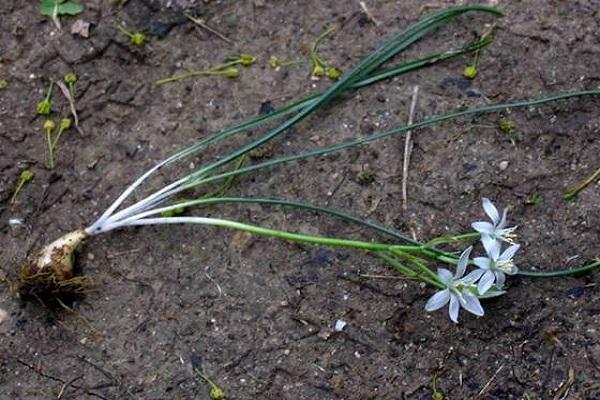
The maximum period for ornithogalum in one place is six years. Therefore, it is recommended to replant it every 4-5 years. To do this, you need to carefully dig out the bush, separate the young onions that have appeared and plant them in a new place. The optimal period for this procedure is late August or early September. You can also transplant in early spring.
Pruning
Every year after the flowering of the poultry farm, dried leaves, wilted inflorescences and other unattractive parts of the plant should be cut off.
Preparing for winter
Most of the poultry varieties cultivated in our latitudes are cold-resistant, therefore they winter without an auxiliary shelter. In harsh climates, cover the area with fallen leaves or spruce branches.
Heat-loving plant species require special preparation. Before wintering, they should be dug out of the flower bed, temporarily transplanted into flowerpots or other containers filled with a mixture of sand and peat, and with the onset of spring they should be put back in their original places.
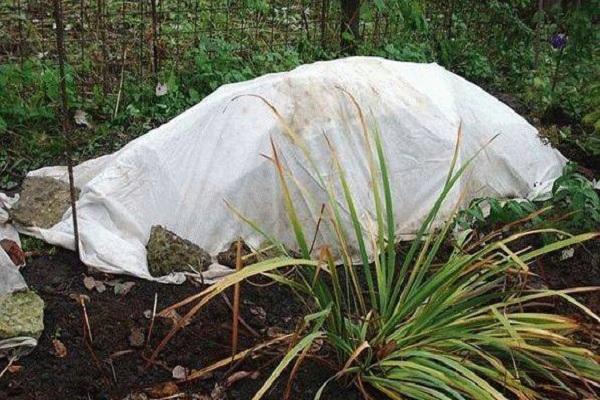
Diseases and pests: control and prevention
The poultry farm is most susceptible to the following ailments:
- Gray rot. The disease is identified by the mold covering various parts of the plant. It is recommended to spray it with insecticides. For small lesions, they should be carefully cut out and sprinkled with wood ash.
- Fusarium is a fungal disease that affects the roots of a plant. At the initial stage, fungicidal solutions can easily cope with this problem, but if the infection has reached a large scale, the plant should be destroyed.
- An onion mite causes the bulb to shrink and become stained. In such cases, insecticidal treatment is carried out.
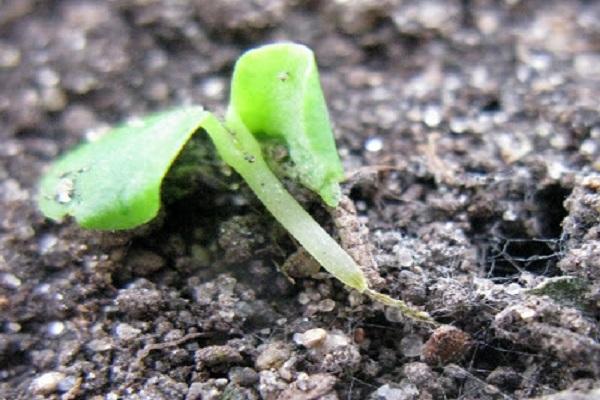
Reproduction methods
The poultry farm propagates by cuttings or sowing seeds. Each method has its own nuances.
Seeds
This is a time consuming and laborious method. Previously, the seeds of the plant must undergo a stratification procedure - for this they are placed in a refrigerator for 3-4 months. When spring comes, sow them in plastic containers or cups filled with light, loose soil.
After the appearance of 3-4 leaves, young seedlings must be hardened - daily taken out into fresh air for 16-18 days, each time increasing the period of their stay outside. It will be possible to start planting in the ground when the seedlings of the poultry farm can be in the open air throughout the day.
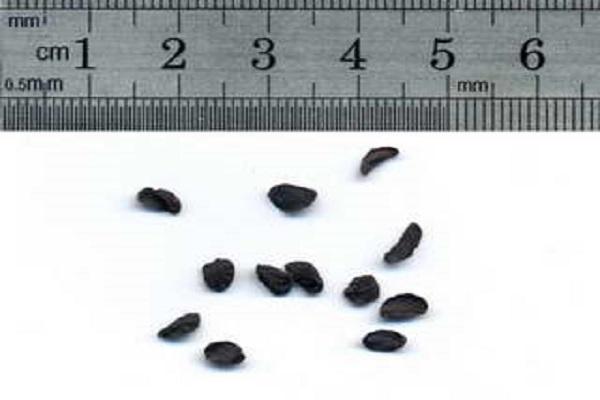
Cuttings
Poultry cuttings allow to grow young and strong specimens much faster. In this case, it is necessary to dig up a mature plant that has reached the age of 5-7 years. Remove from the earth and dry under the sun. Separate the daughter bulbs from the large parent bulb, which have already formed their own roots. Plant them in a semi-shaded or sunny place.
